I promised you when I wrote about shellacthat I'll pick up the subject to say more about French polish - special method of applying this natural varnish. I don't forget the promise, so here follows a series of details and tips that are sure to make you want to varnish at least one small wood using this method. At least that was the reaction with me.
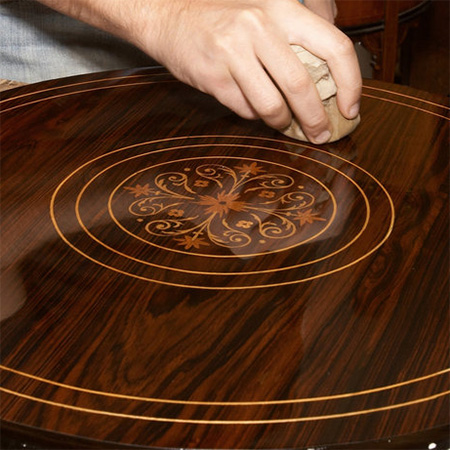
The shellac application process is a time-consuming, repetitive, labor-intensive process. Application techniques are very much up to the individual specialist, with experience gained over time helping them to find the method that best suits the way they work. Whichever technique is used, there are some common elements: preparation of the varnish, the substrate, the pad to be applied and the mandatory principles during application.

The first operation is obtaining the lake flakes. As you've seen, shellac is mostly sold in solid form because it doesn't last very long ready-mixed. It is also available, but it contains a number of additives that prolong its life and can affect the final quality. It is therefore best that the lacquer is prepared by the person applying it. Shellac flakes or shellac buttons are dissolved in denatured spirit (industrial alcohol). There are several proportions in which dilution can be done, but the most commonly used are:
- 350-360 g/l of alcohol - for primer or primer coat applications or for painting applications for substrate preparation. In this case use only dewaxed shellac;
- 240-250 g/l of alcohol - the most commonly used proportion for application and sanding;
- 100-120 g/l of alcohol - the final coats which are applied without intermediate sanding and which give the mirror gloss.
Choose the flakes according to the desired color and grind them very finely in a grinder to dissolve them more easily.
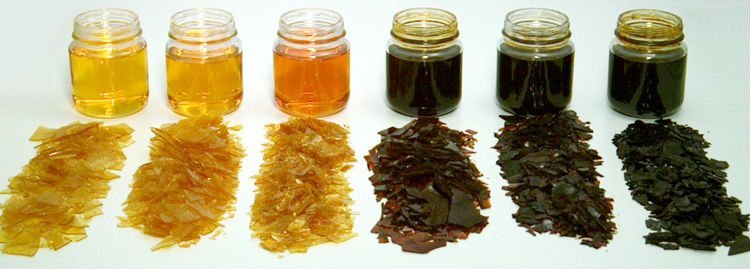
It is best to use glass containers with lids so that you can stir the mixture. Do not use metal containers as they interact with the components. After weighing, measuring and mixing, put the lid on, shake the mixture well and leave for 1-2 days for complete dissolution. Finally filter through a fine cheesecloth to remove impurities. If it's a cold spell, for faster dissolution, you can put the varnish bowl in a bowl of warm water. Be careful, do not put the pot directly on the fire or in boiling water because the high temperature spoils the varnish.
The next step is buffer preparation with which the application is made, shfam as they call it experts. It can be made from cotton wool, pieces of old knitted or woollen bumbarc, which are placed in a piece of finet or cotton, tightly pressed and knotted so as not to come undone during application. Finally, the pad is tapped a few times against a flat surface to weave and settle. The underside should be well stretched and flat, with no wrinkles, seams or holes, which may cause the varnish to be applied unevenly.
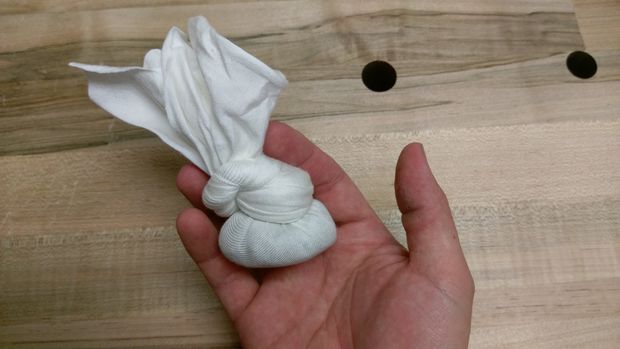
Before applying the varnish the wood surface must be prepared and sanded very well. Repair scratches and holes. If the finish is to be satin-finished, sand large-pored hardwood (walnut, oak) with 400-grit sandpaper and finer-pored hardwood (walnut, oak) with 600-grit sandpaper. For mirror polish, use 600 and 800 grit paper respectively. Musical instruments are sanded with 1000.
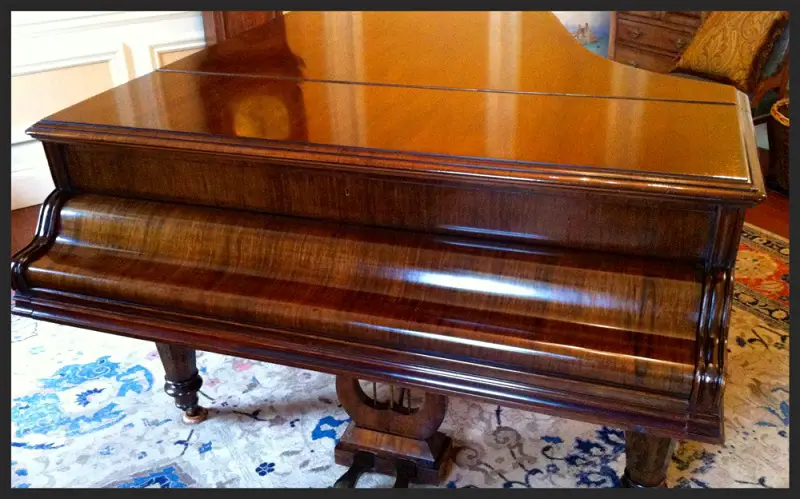
Loading the tampon with varnish is done with great care and by pouring in the milk a little at a time. It is best to use a pipette. The pad should not be mushy, but it should not be dry either. You can test it on the back of the palm of your hand, where it should feel moist and the milk should not run. Finally put a few drops of mineral oilwalnut or olive oil. Linseed oil is not good because it is too viscous. The oil helps the pad to glide, and the varnish doesn't get trapped on the wood in large quantities. Loading the pad is where experience speaks for itself. You will only know the right amount of varnish or oil once you start working. If the pad sticks to the surface, too much varnish or too little oil has been applied.
With everything ready you can get started actual application of the varnishwith continuous circular or figure-8 movements. Never stop because a dent will appear. Even if the pad is dripping varnish, the movement must not stop. Continue moving towards the edge. Stopping should not be done abruptly but as a continuation of the movement. From the rotation of the hand, you practically come out to the edge of the piece.
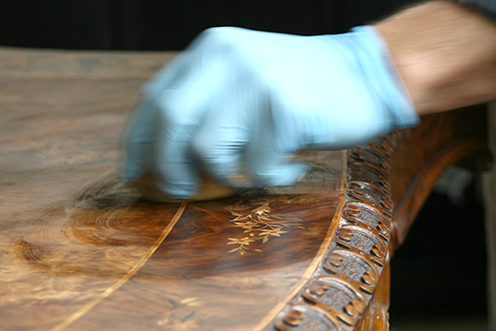
Shellac dries quickly compared to other varnishes or oil, in 5-10 min. After each application the surface is sanded to remove any unevenness. Even if it dries in 5 min it is better to sand after 20-30 min. First sand with 800 grit, then continue with 1000, 1200 or fine steel wool. Even 30 coats or more are needed to get a nice surface. For mirror gloss, use thinner varnish for the last coats and do not sand between coats.
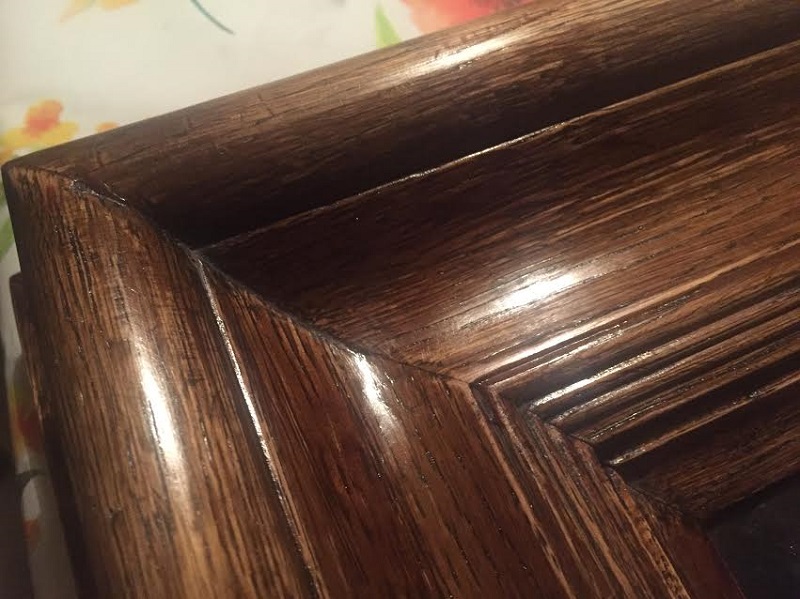
Applying shellac is no simple matter, and it's a good idea to call in specialized firms if the project involves old pieces of furniture that need to come out perfectly. Just like the article on recovering 100-year-old furniture.
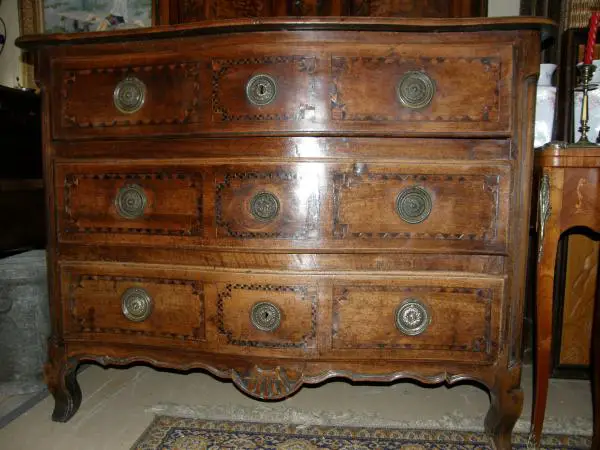

































Great description!
I always read you with great pleasure and interest.
Thank you for your articles.
I think there is an error in the article regarding the shellac/alcohol concentration.
If it were as in the article 35 - 36 gr/l alcohol, it would mean 3,5 % shellac concentration. Too little?!
Correct is 350gr/l alcohol.
You're right, it's missing a zero.
I will make the change. Thank you very much.
All the best!
Thanks for the article,
I have a question: I inherited some furniture from the 1920s, curved and veneered with walnut root and from what I remember I was told that it would be lacquered with serlac, what would be the solution to refresh its shine, because after 2 refuges during the war, time and weather have left their mark. Initially I wanted to sell it, but not finding buyers and seeing the prices (ridiculous in my opinion - compared to current furniture made of chopped wood) I decided to try to integrate it into the space. Thanks in advance for your advice,
Sincerely, Sorin Crasi
Hello!
And we thank you for following us!
At that time - 1920 - oil and shellac were about the only possibilities. I think I know what you are talking about, I have seen such walnut furniture with curved cabinet doors and dressers. My advice is to clean the furniture and then wax and polish it. It is the simplest and most handy method. Clean with a soft (cotton), non-scratching cloth and with water and dishwashing detergent or soap. Soak the cloth in water, wring it out and wipe the furniture thoroughly. Then come back with a dry, soft cloth. If necessary, repeat the operation. Over time dirt collects and is fixed with modern cleaning products (!) containing synthetic waxes. Finally, let it air thoroughly before waxing.
Use commercial furniture wax. Apply a very thin layer over the entire surface and then wipe with a soft dry cloth. Below you have a link where you can find other solutions to refresh the finish.
All the best!
https://revistadinlemn.ro/2017/12/04/sfaturi-pentru-improspatarea-finisajului-mobilierului-si-al-pardoselilor-din-lemn/
You can also find out more about your favourite topics in printed magazines. You can still subscribe to receive magazines published in 2019 by clicking on the link below.
Thank you!
https://revistadinlemn.ro/product/abonament-2019/
Hello! I really used your guidelines on applying selac. I knew something about it, but not exactly the whole process. I am a piano tuner and technician and am currently working on finishing a piano with selac. I cleaned the old finish with a stripper and then with 240, 400, 800 and 1000 grit sandpaper. The veneer that is on this piano has a lot of pores, before bathing it I rubbed with very fine abrasive powder and alcohol, which gave good results covering the pores. I started the finishing with sealer, momentarily on the large top cover, after 60 coats I got a superb, mirror shine. I have 2 questions though:
1) Is there a simpler way to fill the pores of the wood without ruining its "design"? Because at 1 m2 I had to rub 2 hours with abrasive powder to cover everything.
2) Finally I would like to apply a coat of protective wax for the selac finish, what kind of wax would you recommend so that it does not change the shine at all and remains exactly as it looks now? I saw that there is some microcrystalline wax on the market, what would you suggest?
Thanks in advance. Yours sincerely.
Hello!
Glad I could be of service.
1. There are pore-filling fillers. You can find them at those who sell special wood fillers.
2. Microcrystalline wax comes from oil refining. It is neutral, stable over time, does not change the colour of the substrate and is UV resistant. So is Renaissence Wax, the wax used by restorers. You can use it to protect the finish, but it needs to be polished very well to keep its shine.
All the best!
https://revistadinlemn.ro/2017/03/29/renaissance-wax-ceara-restauratorilor-dar-nu-numai/
Thank you very much for your advice. In the meantime, I found a colorless primer for filling pores in wood. I haven't had a chance to test it on anything else yet, not sure if the alcohol in the shelac reacts with it somehow.
Very useful information. I like that Wood Magazine treats the subject objectively, looking at both the pros and cons of a particular process. Congratulations!
Thank you!